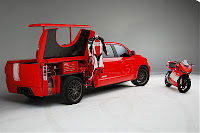You might look like you're not paying attention when you doodle, but science says otherwise.
Researchers in the United Kingdom found that test subjects who doodled while listening to a recorded message had a 29 percent better recall of the message's details than those who didn't doodle. The findings were published in Applied Cognitive Psychology.
"If someone is doing a boring task, like listening to a dull telephone conversation, they may start to daydream," study researcher Professor Jackie Andrade, of the School of Psychology at the University of Plymouth, said in a news release issued by the journal's publisher. "Daydreaming distracts them from the task, resulting in poorer performance. A simple task, like doodling, may be sufficient to stop daydreaming without affecting performance on the main task."
For the experiment, a two-and-a-half minute listing of several people's names and places was played for test subjects, who were charged with writing down only the names of the people said to be attending a party. During the recording, half the participants were asked to simultaneously shade in shapes on a piece of paper without attention to neatness. Participants were not told they were taking part in a memory test.
When the recording ended, all were asked for the eight names of those attending the party as well as eight place names mentioned in the audio. Those asked to doodle wrote down, on average, 7.5 names and places, while those who didn't doodle listed only 5.8.
"In psychology, tests of memory or attention will often use a second task to selectively block a particular mental process," Andrade said. "If that process is important for the main cognitive task, then performance will be impaired. My research shows that beneficial effects of secondary tasks, such as doodling, on concentration may offset the effects of selective blockade."
In everyday life, Andrade said, doodling "may be something we do because it helps to keep us on track with a boring task, rather than being an unnecessary distraction that we should try to resist doing."
Researchers in the United Kingdom found that test subjects who doodled while listening to a recorded message had a 29 percent better recall of the message's details than those who didn't doodle. The findings were published in Applied Cognitive Psychology.
"If someone is doing a boring task, like listening to a dull telephone conversation, they may start to daydream," study researcher Professor Jackie Andrade, of the School of Psychology at the University of Plymouth, said in a news release issued by the journal's publisher. "Daydreaming distracts them from the task, resulting in poorer performance. A simple task, like doodling, may be sufficient to stop daydreaming without affecting performance on the main task."
For the experiment, a two-and-a-half minute listing of several people's names and places was played for test subjects, who were charged with writing down only the names of the people said to be attending a party. During the recording, half the participants were asked to simultaneously shade in shapes on a piece of paper without attention to neatness. Participants were not told they were taking part in a memory test.
When the recording ended, all were asked for the eight names of those attending the party as well as eight place names mentioned in the audio. Those asked to doodle wrote down, on average, 7.5 names and places, while those who didn't doodle listed only 5.8.
"In psychology, tests of memory or attention will often use a second task to selectively block a particular mental process," Andrade said. "If that process is important for the main cognitive task, then performance will be impaired. My research shows that beneficial effects of secondary tasks, such as doodling, on concentration may offset the effects of selective blockade."
In everyday life, Andrade said, doodling "may be something we do because it helps to keep us on track with a boring task, rather than being an unnecessary distraction that we should try to resist doing."



















